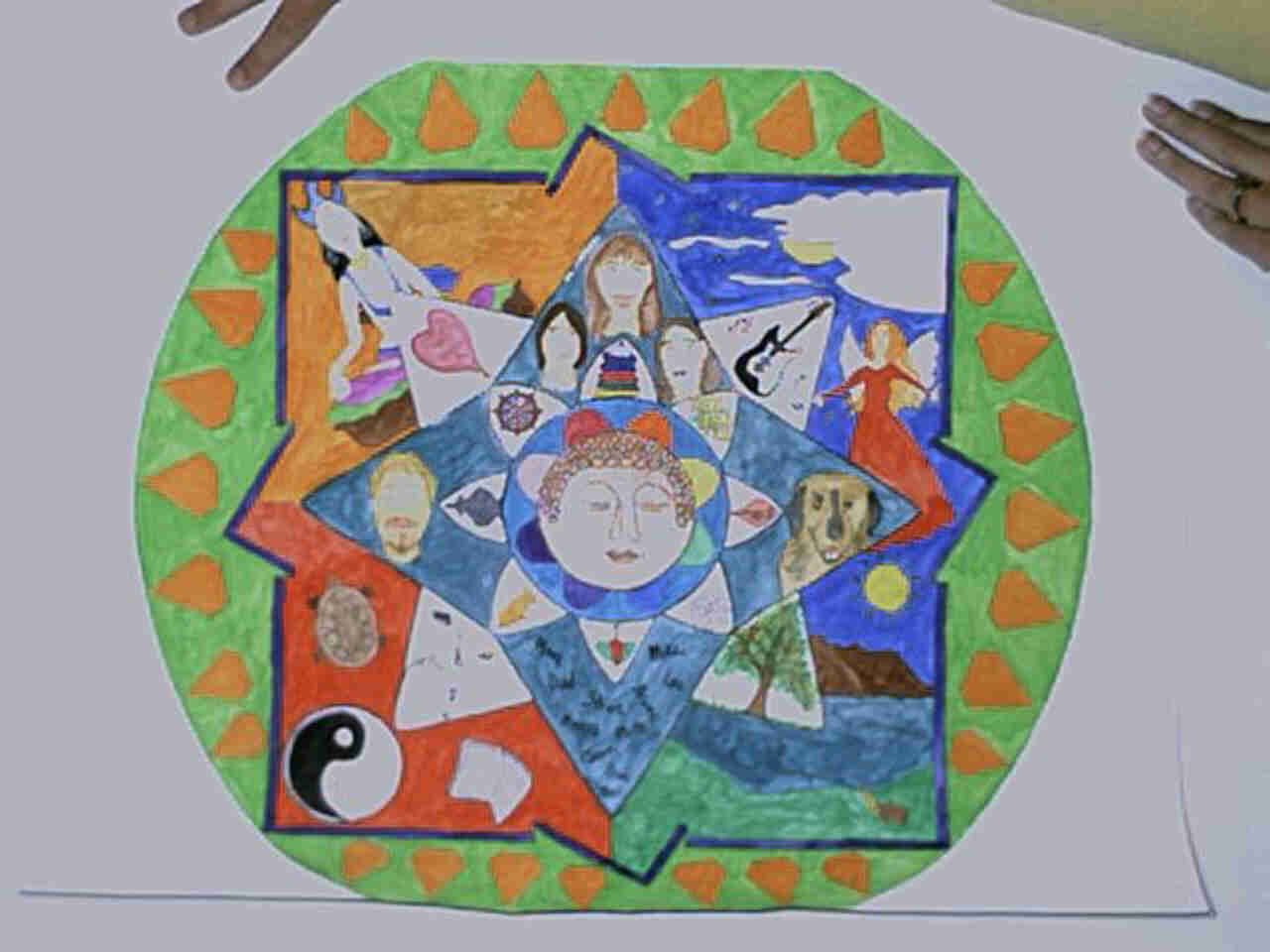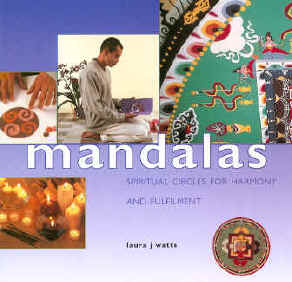|
Mandalas are used in many
spiritual traditions, most notably within Tibetan Buddhism but also within
Native American traditions. Modern Jungian psychology also uses the mandala as a
way of exploring the hidden recesses of self.
The mandala has been
described as:
"The Sacred sphere: The
Union of the Self and the Universe"
"A Perfect Sacred
Sphere"
"A Source of Cosmic
Power "
"A Permanent Abode of
Enlightened Beings"
"A Place where Microcosm
and Macrocosm Unite "
You can create your own
mandala, expressive of your own life and values. In creating your personal
mandala you can get some ideas from browsing the Web.
Here are a few select sites
I would recommend:
There are also many books
available about mandalas:
Begin by building the basic
geometric framework of your mandala.
If you are not much of an
artist, donít fret. The geometric framework can be done with tools (ruler and
compass) or you can download, use, and modify this
mandala framework. Another way to make the framework is to fold a square of
paper in half one way, open it and fold it in half the other way. Open it again
and you will have found the center. Fold it in half again along each diagonal
and you will now have eight sections. Most mandalas are built on multiples of
eight (the eight fold path) as they expand outward. You can then use a compass
or trace variously sized circles (lids, plates, etc.) overlapping the circles as
you desire. Note the diagram in the middle of Patrick
George's site.
Once you've got the
basic framework done, you can fill it in with various symbolic images
and colors uniquely important to you.
Feel free to be as creative
as you care to. Don't feel obligated to stick with the kind of mandalas you find
in your websearch. These are just intended to give you
a background on mandalas and some ideas and inspiration to get started. The most basic framework
you should work with is something within a circle and/or other such basic
geometric pattern (or combination of patterns). This framework represents you.
Most mandalas are built on a pattern that expands in all directions from the
center with no clear top and bottom. Whatever you choose to put within this
framework might represent various aspects of your life past, present and future.
It can be as complex or as simple as you like. Many mandalas combine symbols
within the symbol of the mandala itself (as you see on the Tibetan
mandala). The
very center of your mandala may represent the core of your being - an image that
represents what has been most important to you over the longest span of your
life. This is the axis around which your life and your being revolves. From
there, you can build outward to include symbols of other persons, places, things,
ideas and events that are or have
been a part of your life.
The symbols you can use
might be abstract or iconic representations of things in the world (animals are
always popular). I was looking for a website which might list the meanings of
different animals, plants and colors you might choose to incorporate in your
mandala. The Wiccans have an abundance of "correspondences" and Native
Americans identify various animals with different personality traits. If you
find a good site, let me know. The symbols you use can also be related to your
own religion.
Feel free to use cut out pictures or stickers. You can even do the
entire mandala with a computer graphics application (such as the
one noted above). Your mandala may not be
finished within one week. You may just get the basic concept down and spend
months or years
fine tuning it.
Most of all have fun and
learn something about yourself in the process! So get out your paper, rulers,
compasses (or plates and lids to trace), pencils, crayons, markers, colored
pencils, paints, etc., etc. and let your spirit speak to you!
Here are some specific
directions for making your mandala with colored sand (pdf
file, page 2).
Here is some more guidance and
alternative ideas.
The Buddhist use of
mandala does not end with its creation. Part of the process it to learn to
"let go" (the practice of detachment). After creating the mandala, one
is to destroy it! The destruction of the mandala is done as a ritual.
So, once you have
finished your mandala, develop a ritual by which you destroy it.
-
For instance, if
you have done this on paper, you might tear it to pieces and scatter them
to the winds, or burn them in fire or float the pieces down a river or
even bury it in the earth (earth, water, fire, air elements). It is as a catharsis
- letting go of something ("if you love something, let it go. If it
comes back to you, it is yours; if it doesn't, it never was").
-
Or, if you create
your mandala electronically, just close the file without saving it (of
course, if you do this, you would not be able to send me a copy of it)
(don't use my ideas,
be original and develop your own process for letting go)
When you are
finished, on a
separate piece of paper explain the symbolism in your mandala, the decision
making and creative process by which you designed and created it, and the ritual
you would use to destroy it.
Here are some
examples of what other students have done: (click image to see full size
picture)
|

hand drawn
|
example
2
(using PowerPoint) |

the cookie mandala
|
return to
lecture notes
|

